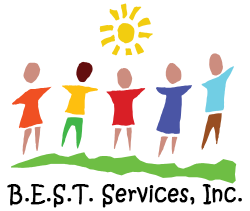Service Description
Comprehensive ABA refers to treatment of the multiple affected developmental domains, such as cognitive, communicative, social, emotional, and adaptive functioning. Maladaptive behaviors, such as noncompliance, tantrums, and stereotypy are also typically the focus of treatment. Although there are different types of comprehensive treatment, one example is early intensive behavioral intervention where the overarching goal is to close the gap between the client’s level of functioning and that of typically developing peers. These programs tend to range from 30-40 hours of treatment per week (plus direct and indirect supervision and caregiver training). Initially, this treatment model typically involves 1:1 staffing and gradually includes small-group formats as appropriate. Comprehensive treatment may also be appropriate for older individuals diagnosed with ASD, particularly if they engage in severe or dangerous behaviors across environments.
Treatment often involves an intensity level of 30-40 hours of 1:1 direct treatment to the client per week, not including caregiver training, supervision, and other needed services. However, very young children may start with a few hours of therapy per day with the goal of increasing the intensity of therapy as their ability to tolerate and participate permits. Treatment hours are subsequently increased or decreased based on the client’s response to treatment and current needs. Hours may be increased to more efficiently reach treatment goals. Decreases in hours of therapy per week typically occur when a client has met a majority of the treatment goals and is moving toward discharge.
Although the recommended number of hours of therapy may seem high, this is based on research findings regarding the intensity required to produce good outcomes. It should also be noted that time spent away from therapy may result in the individual falling further behind typical developmental trajectories. Such delays will likely result in increased costs and greater dependence on more intensive services across their life span.
Initially, treatment is typically provided in structured therapy sessions, which are integrated with more naturalistic methods as appropriate. As the client progresses and meets established criteria for participation in larger or different settings, treatment in those settings and in the larger community should be provided. Training family members and other caregivers to manage problem behavior and to interact with the individual with ASD in a therapeutic manner is a critical component of this treatment model.
Typical Program Components
Treatment components should generally be drawn from the following areas (ordered alphabetically):
- adaptive and self-care skills
- attending and social referencing
- cognitive functioning
- community participation
- coping and tolerance skills
- emotional development
- family relationships
- language and communication
- play and leisure skills
- pre-academic skills
- reduction of interfering or inappropriate behaviors • safety skills
- self-advocacy and independence
- self-management
- social relationships
- vocational skills
